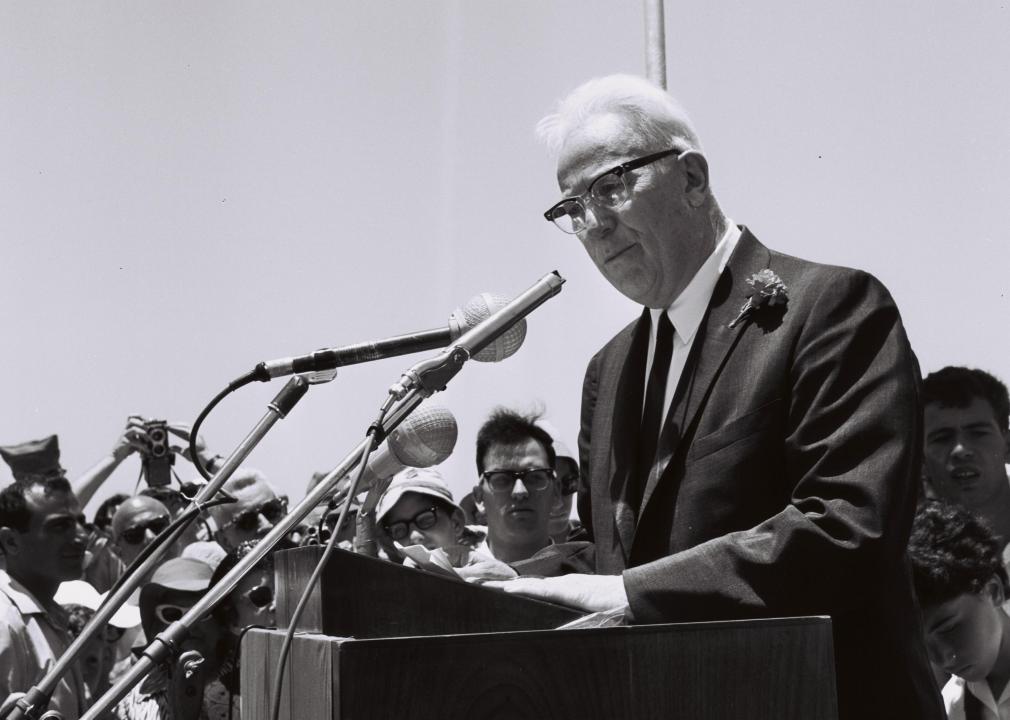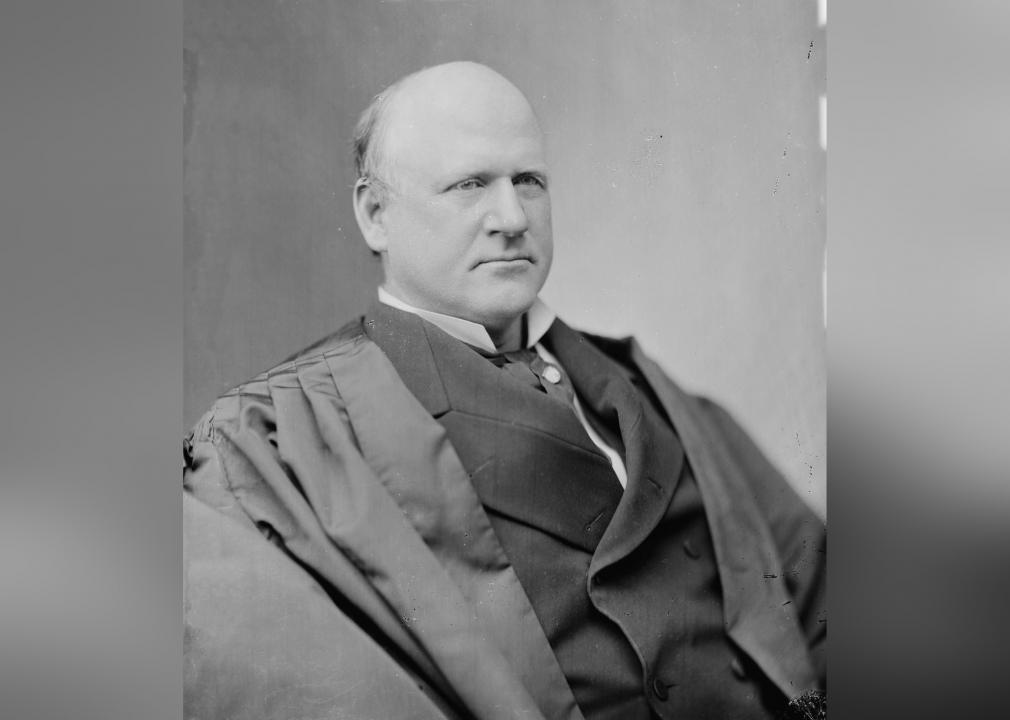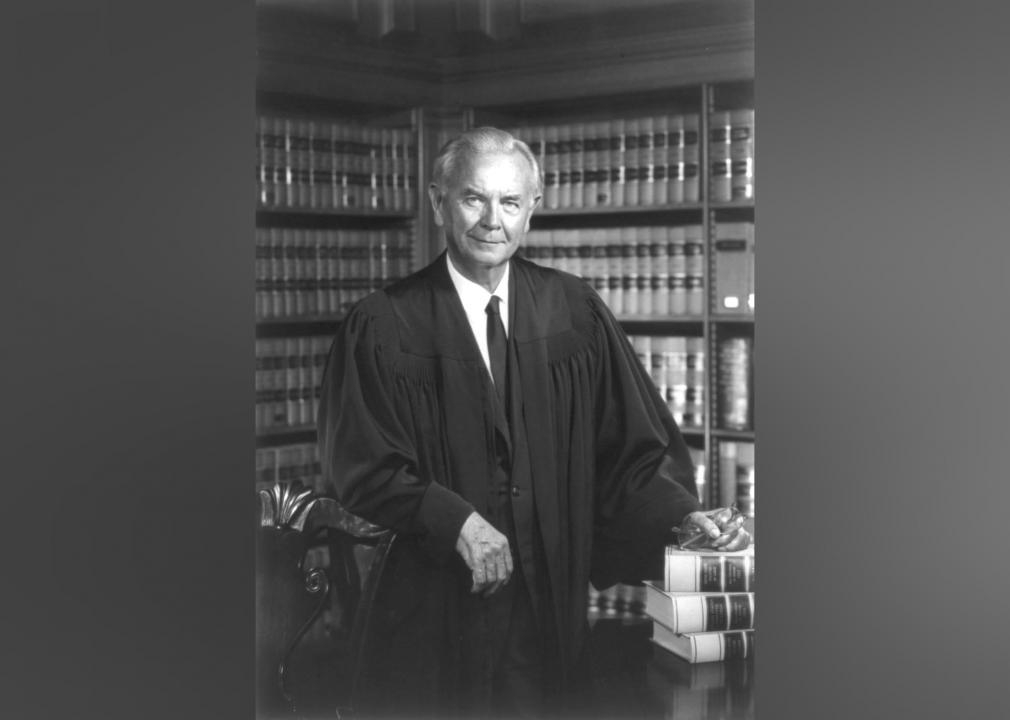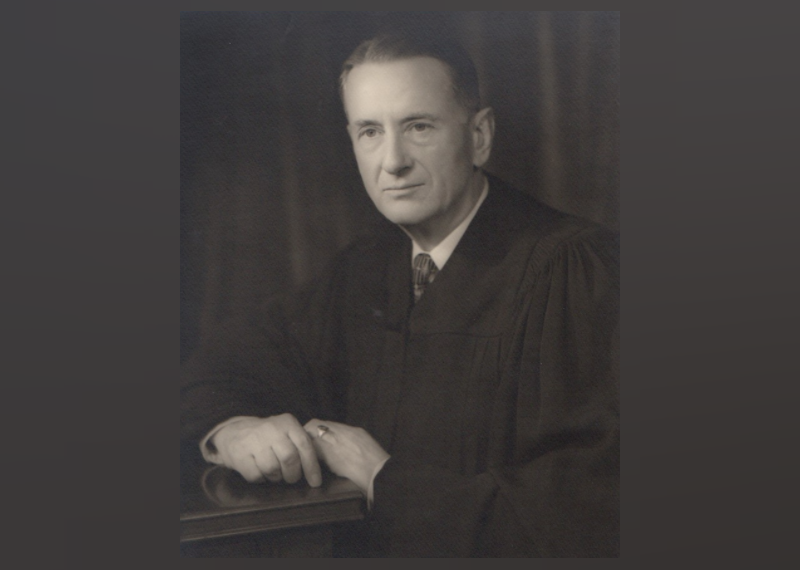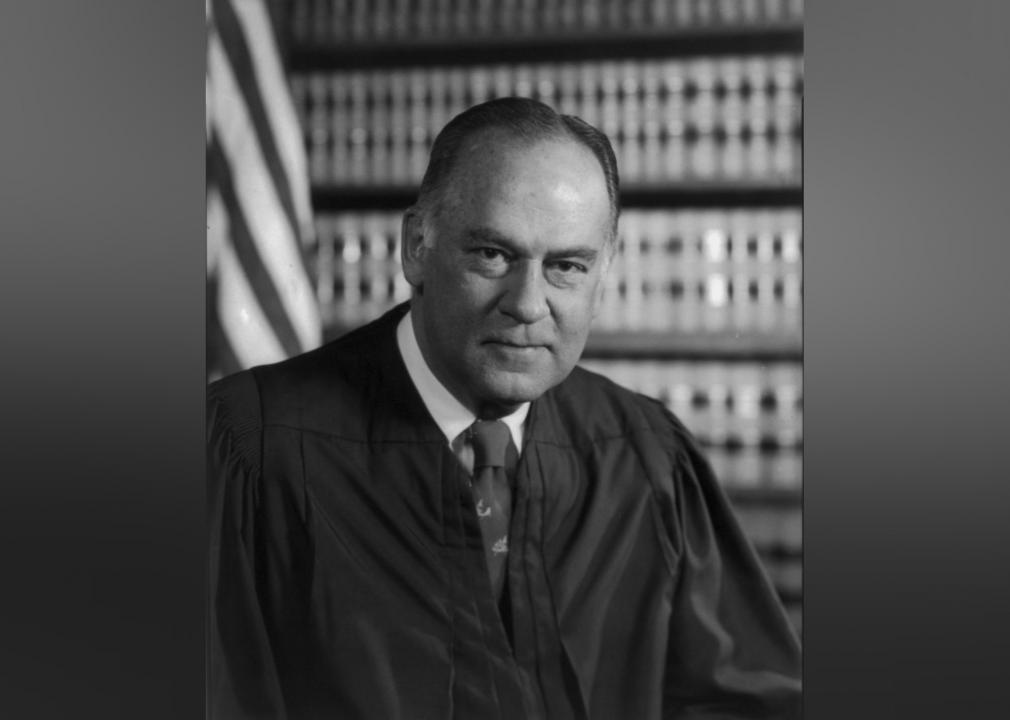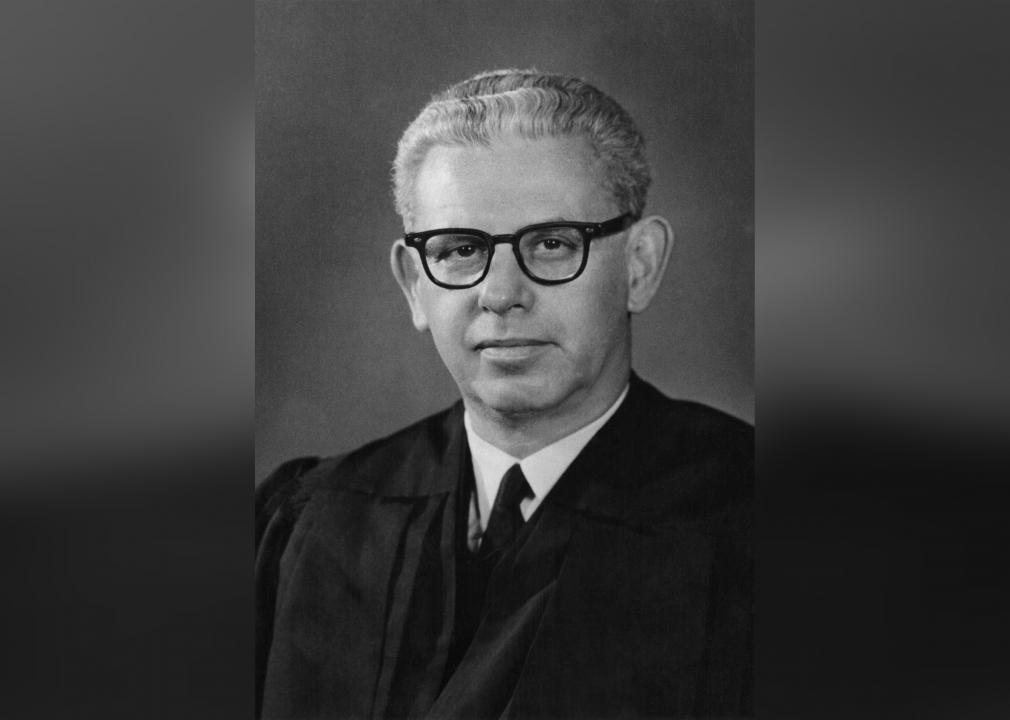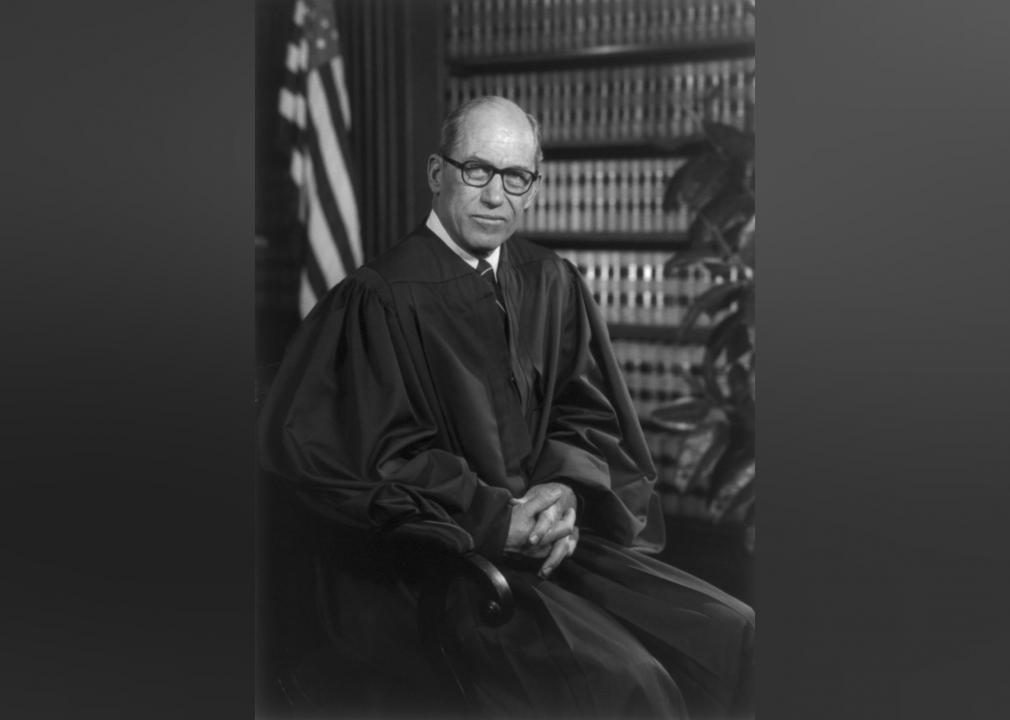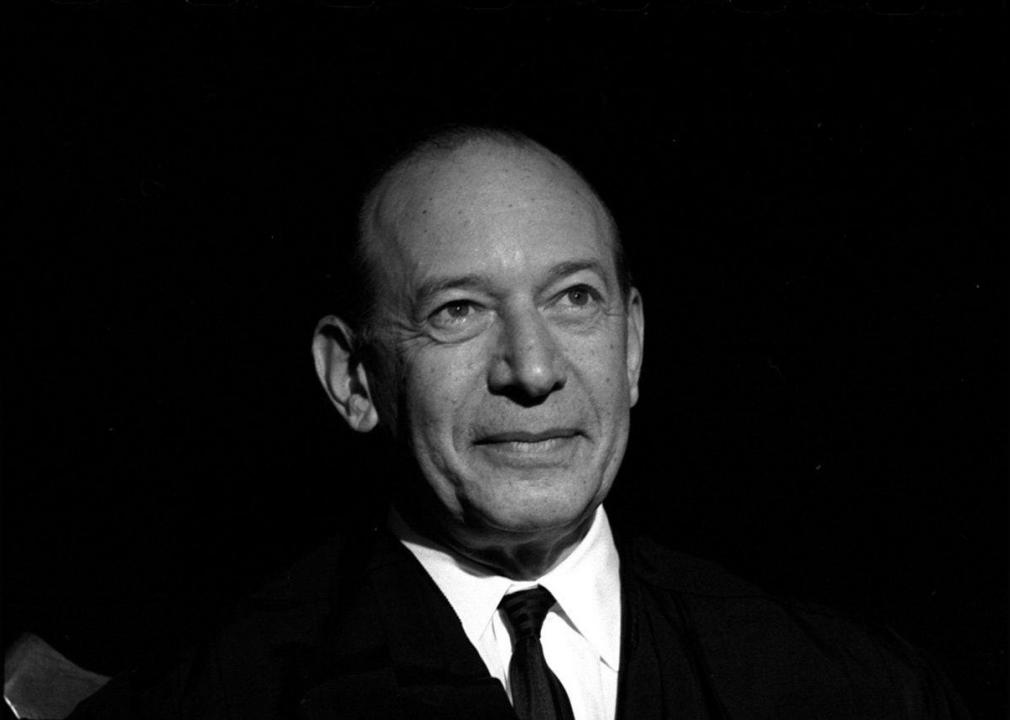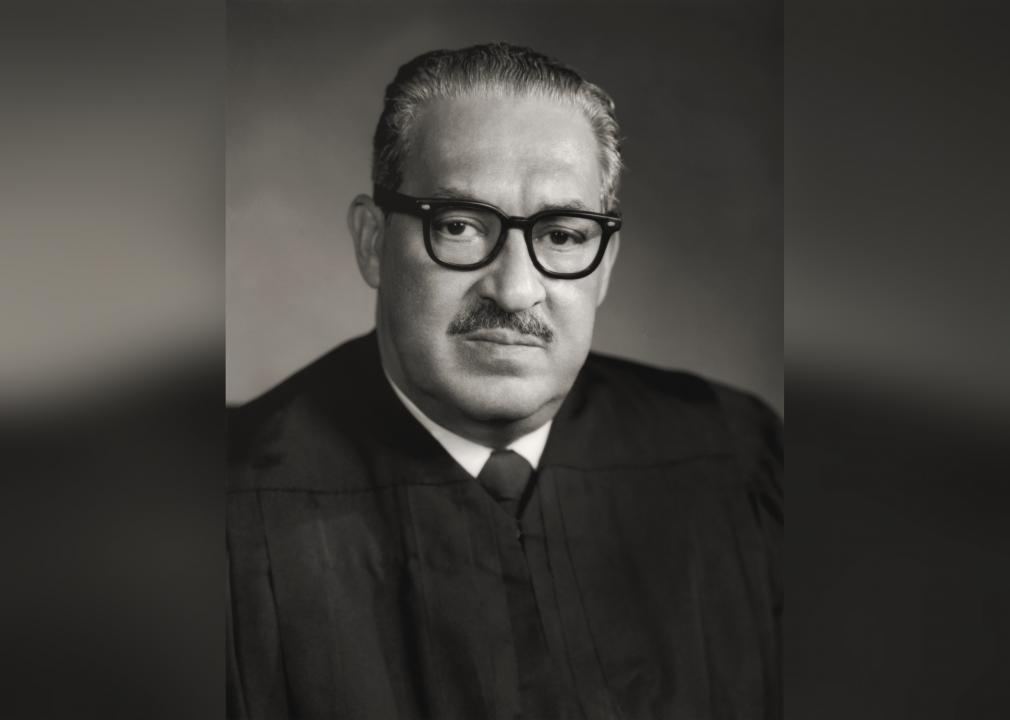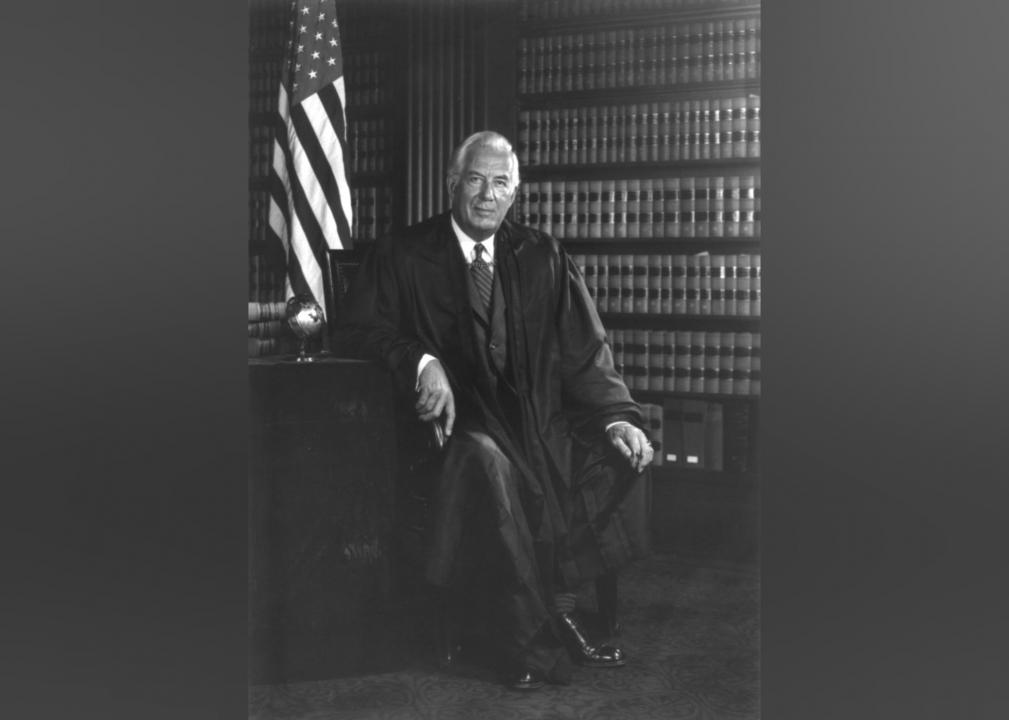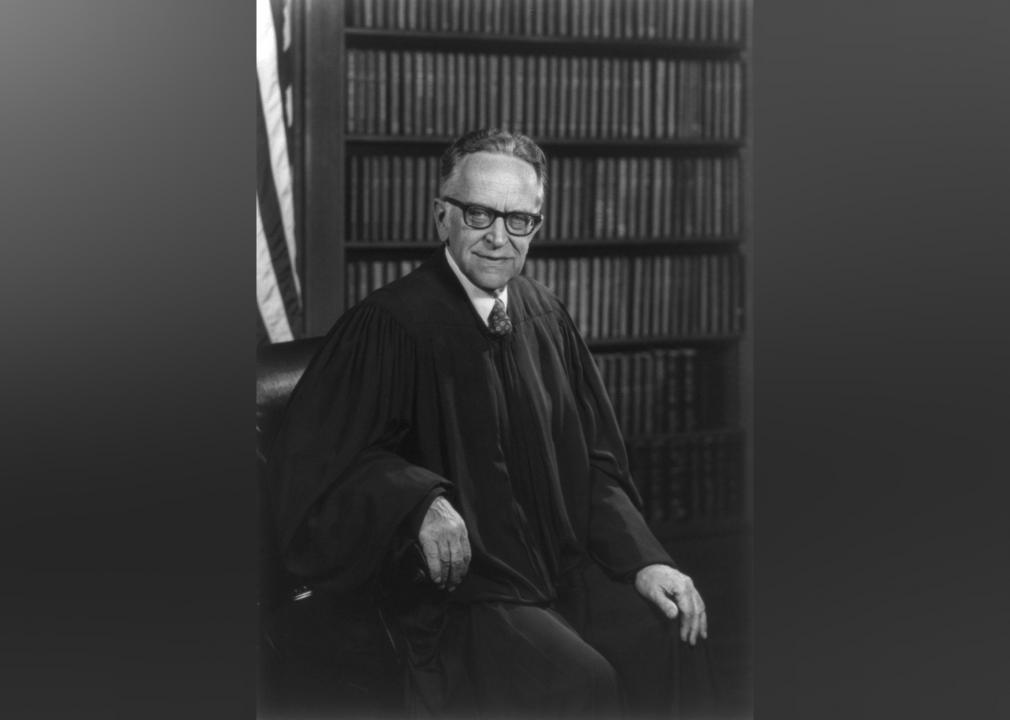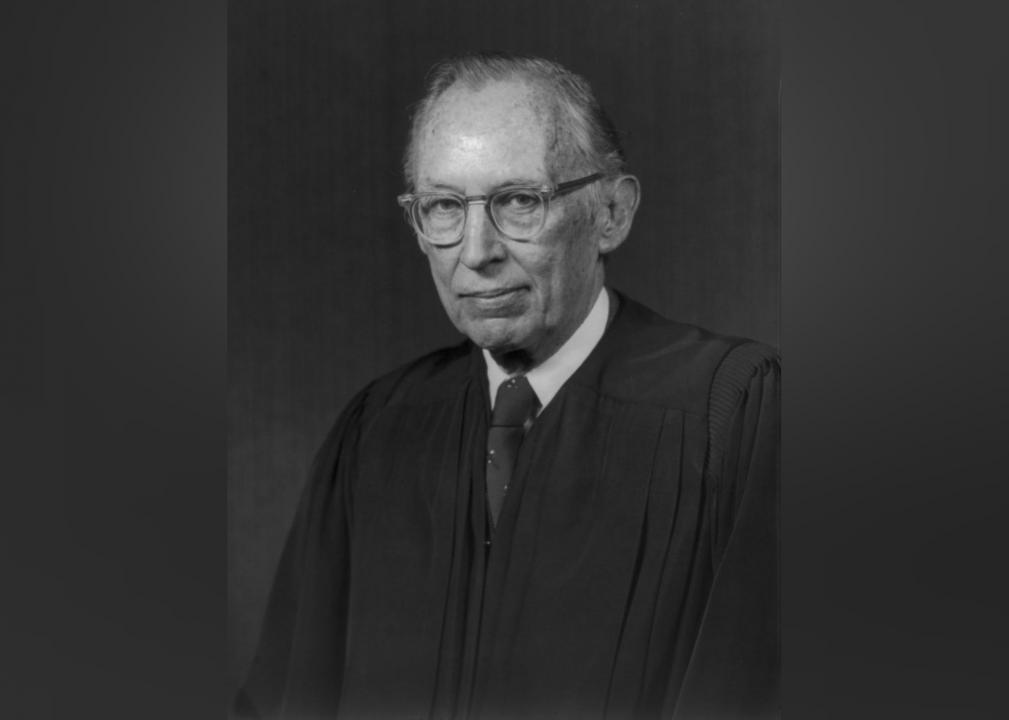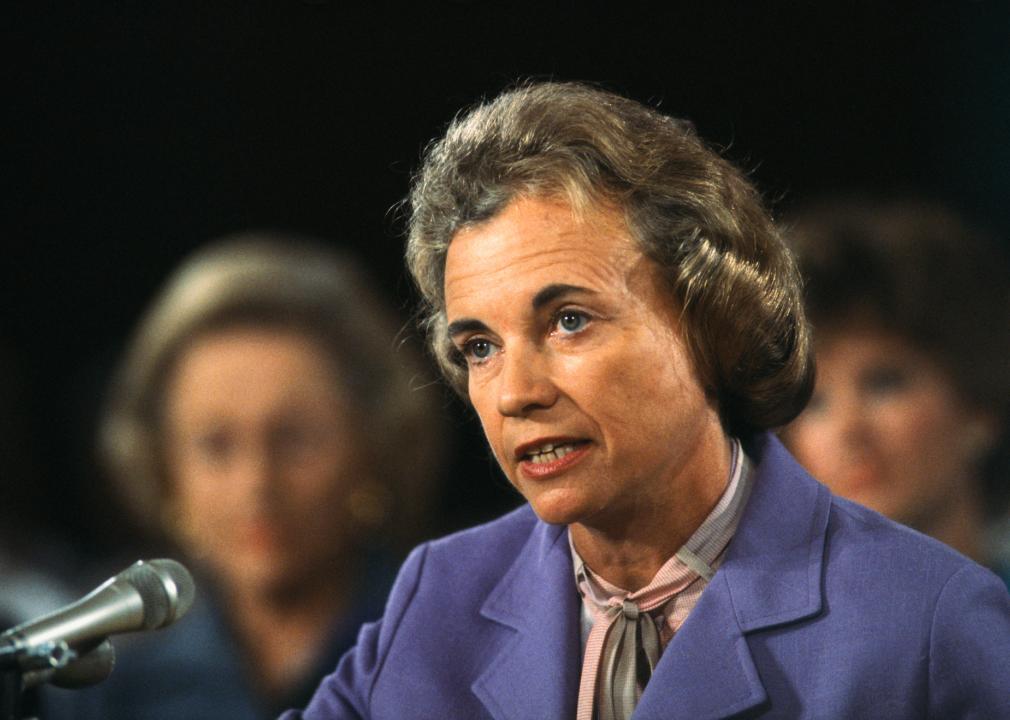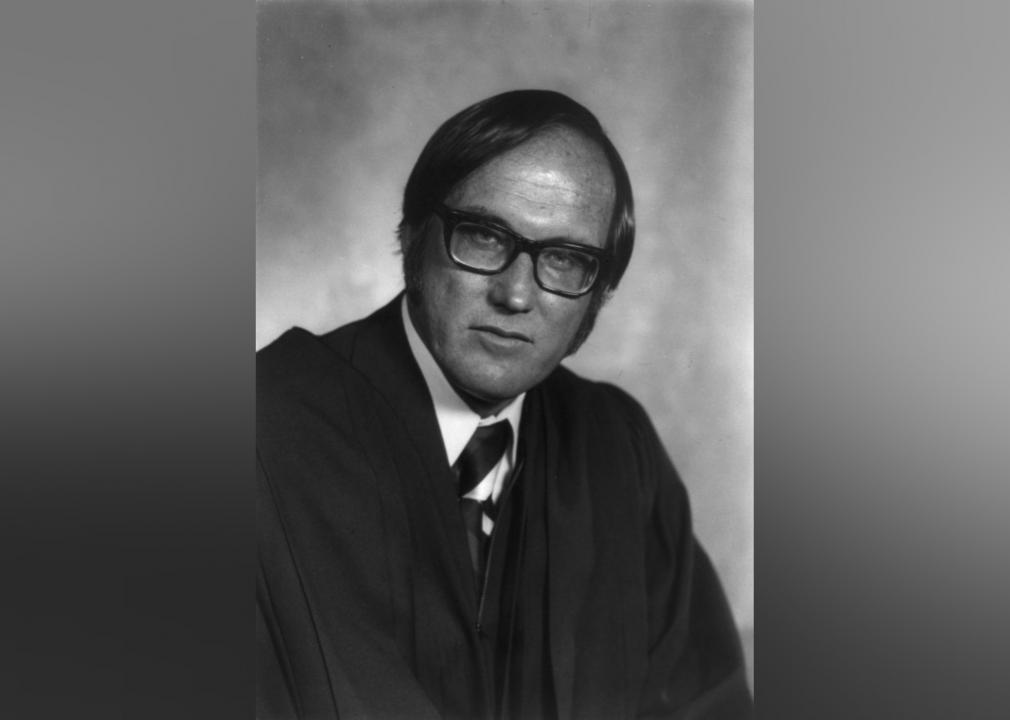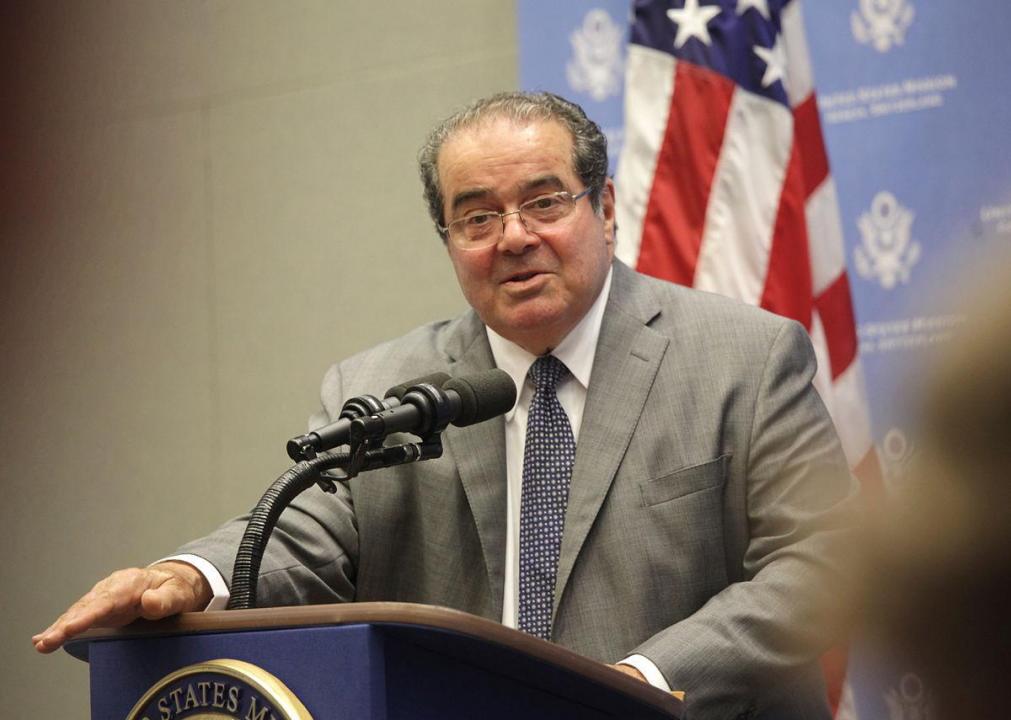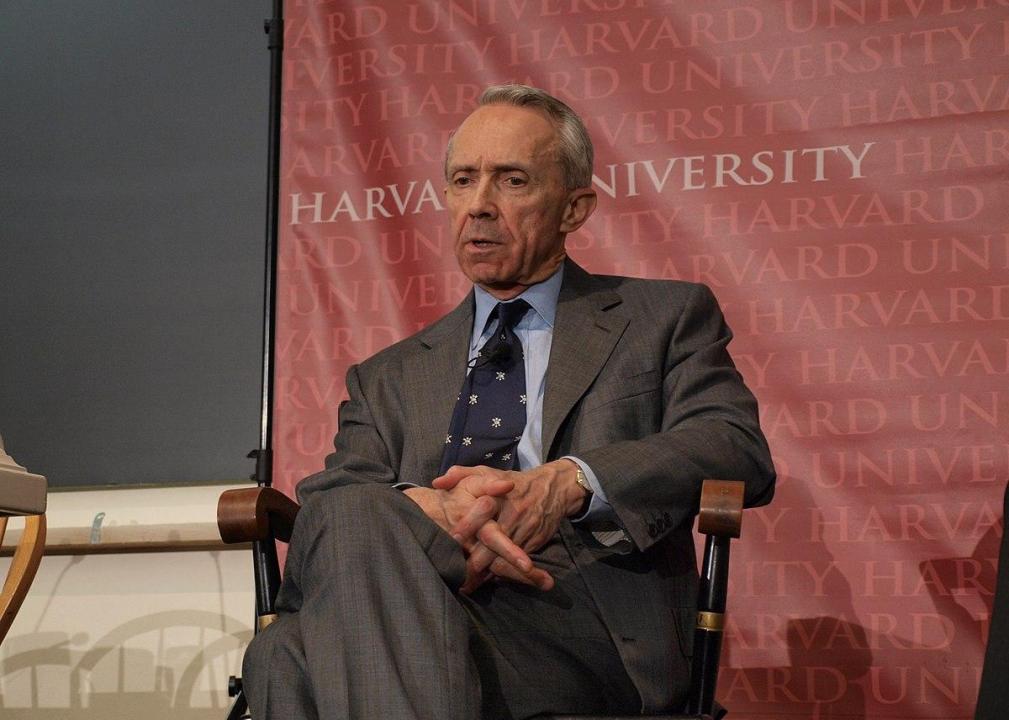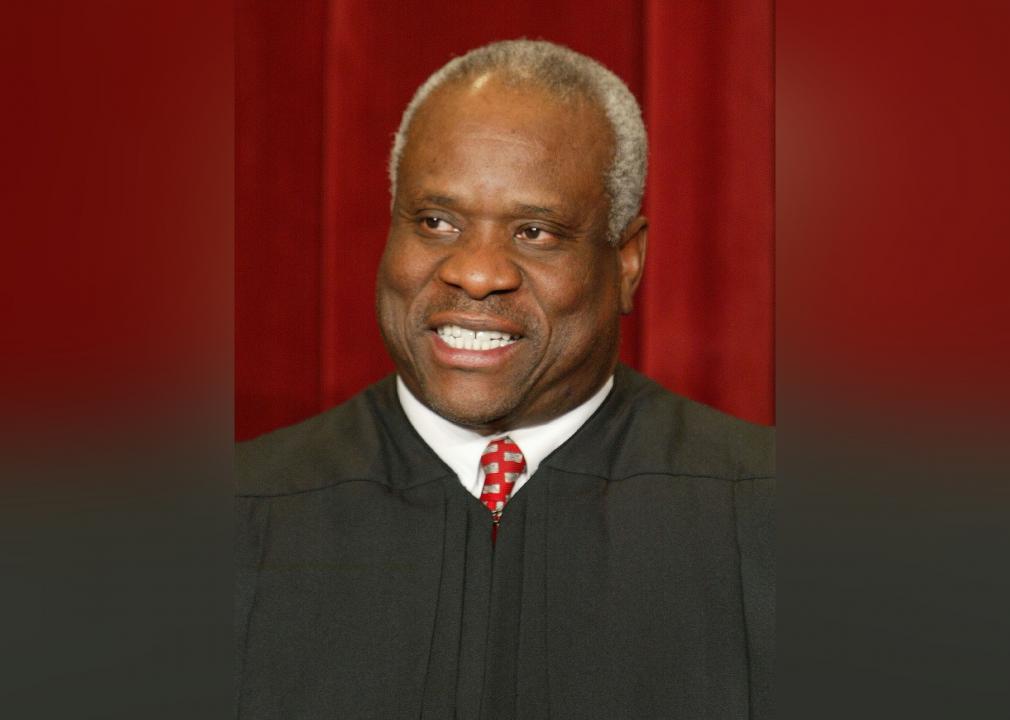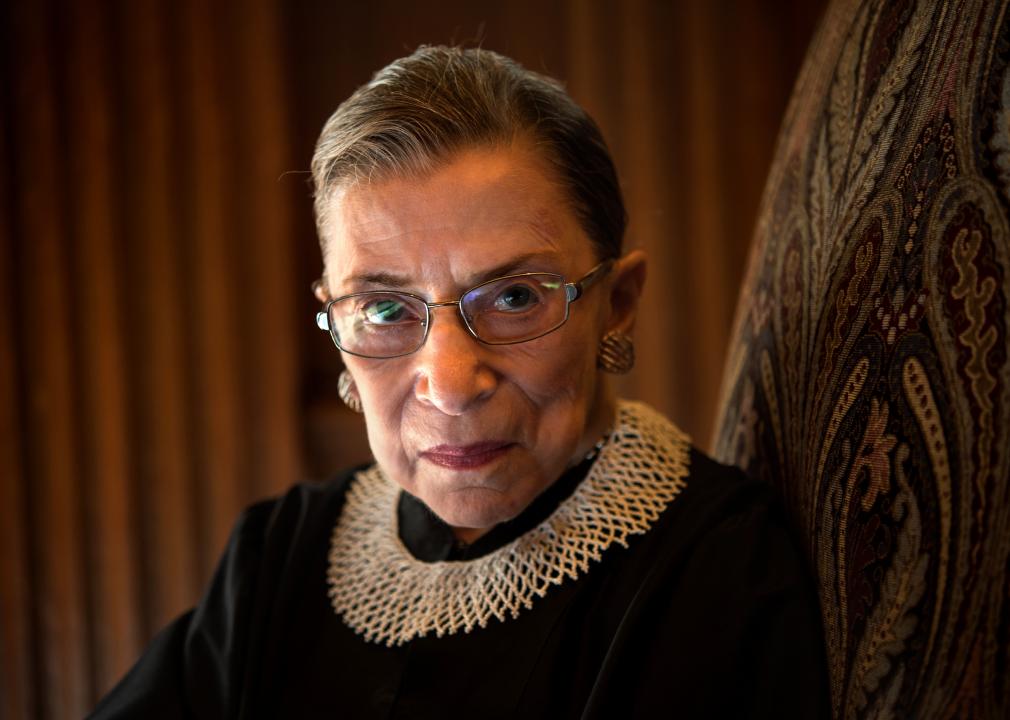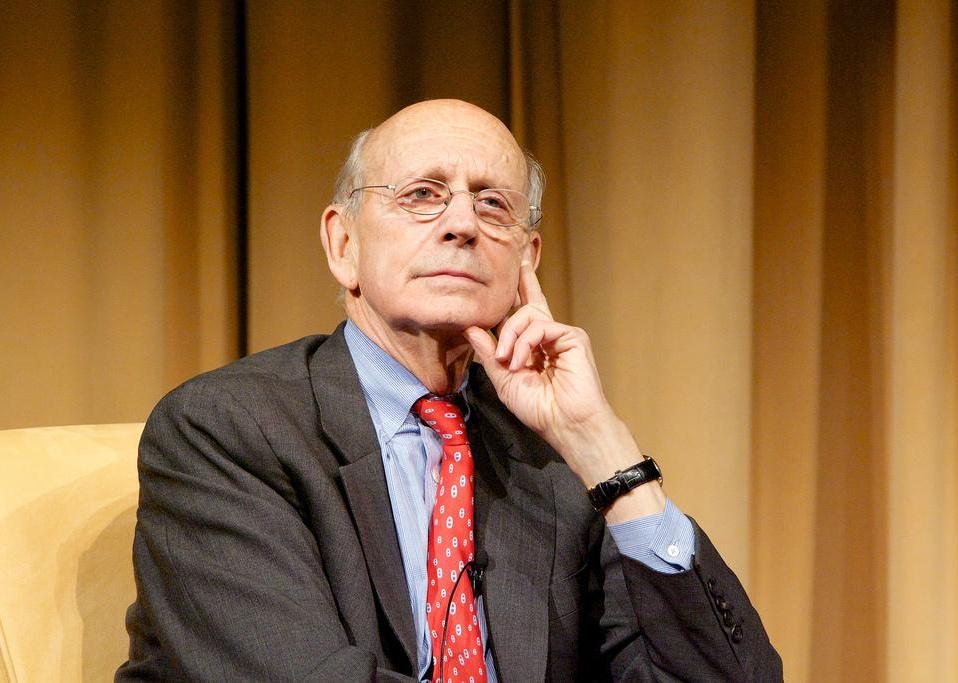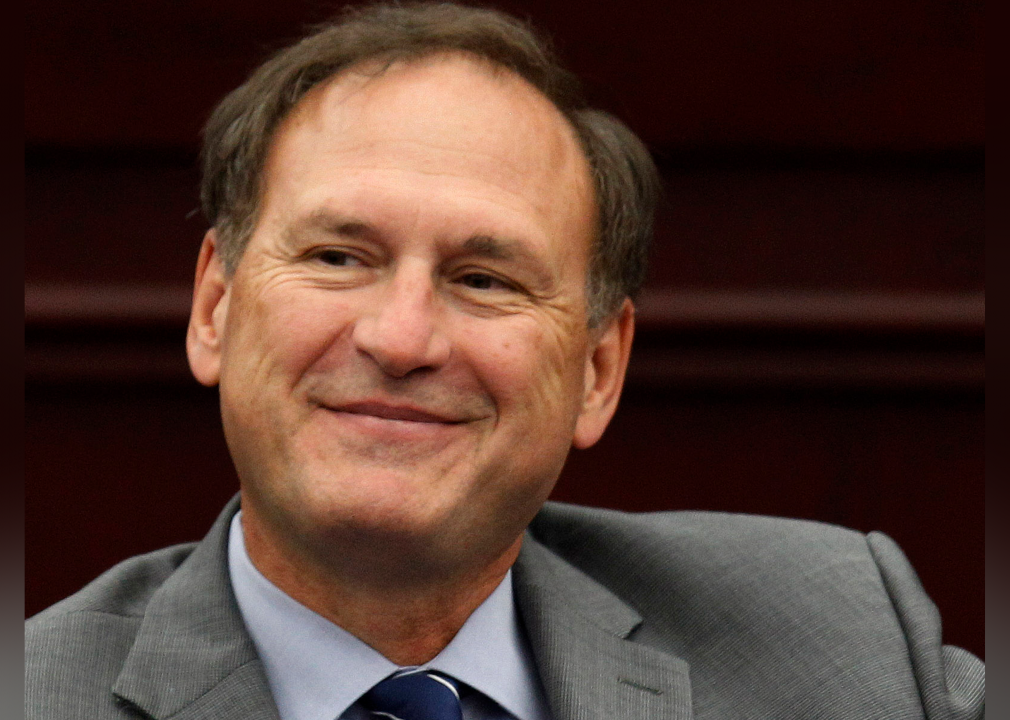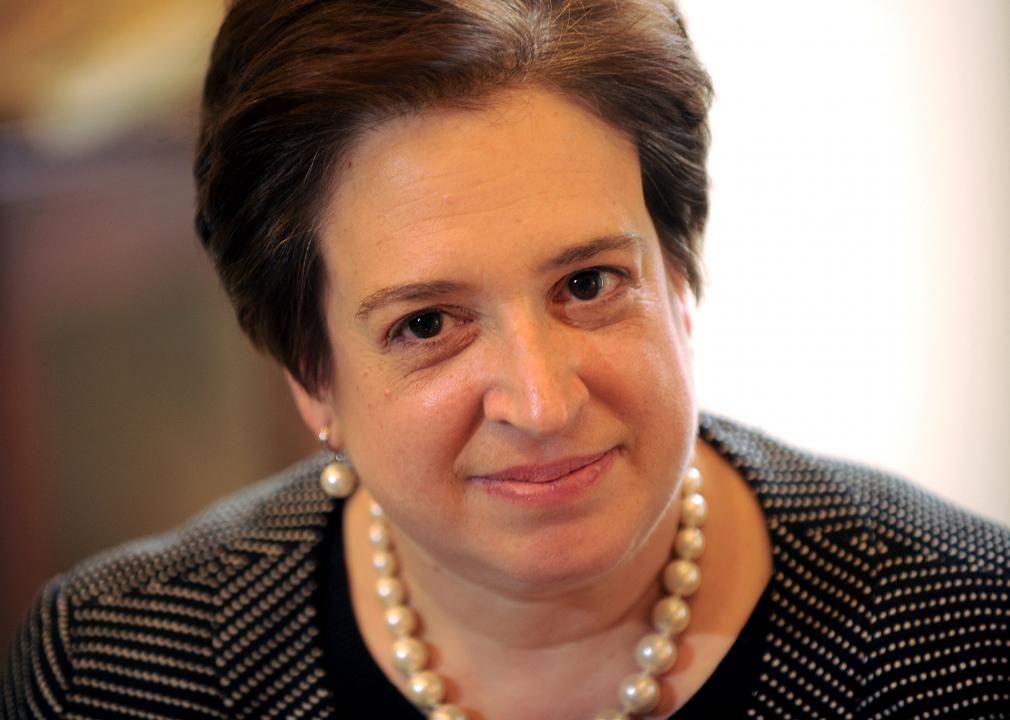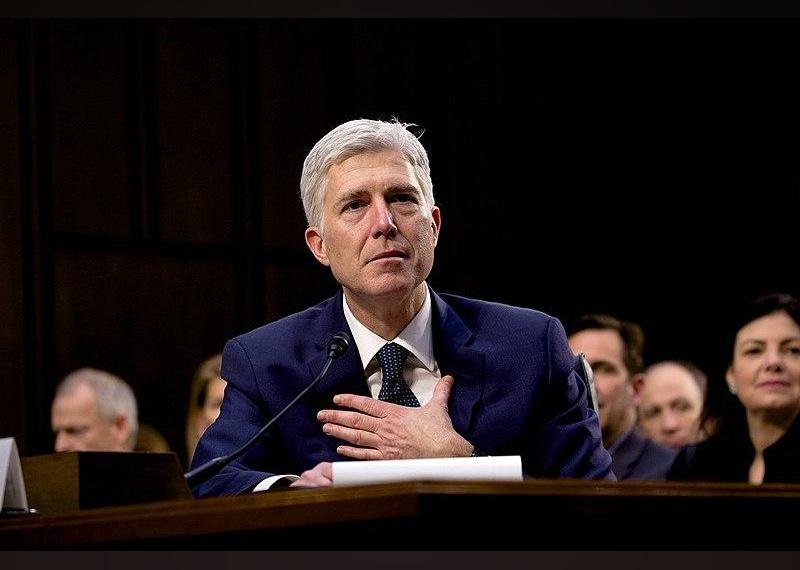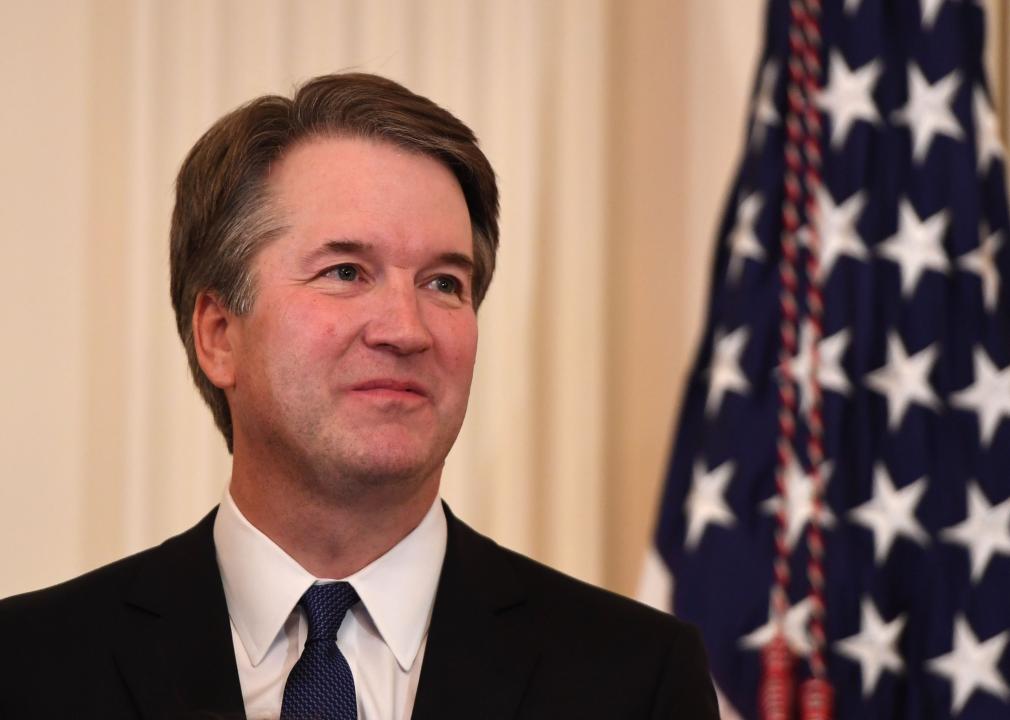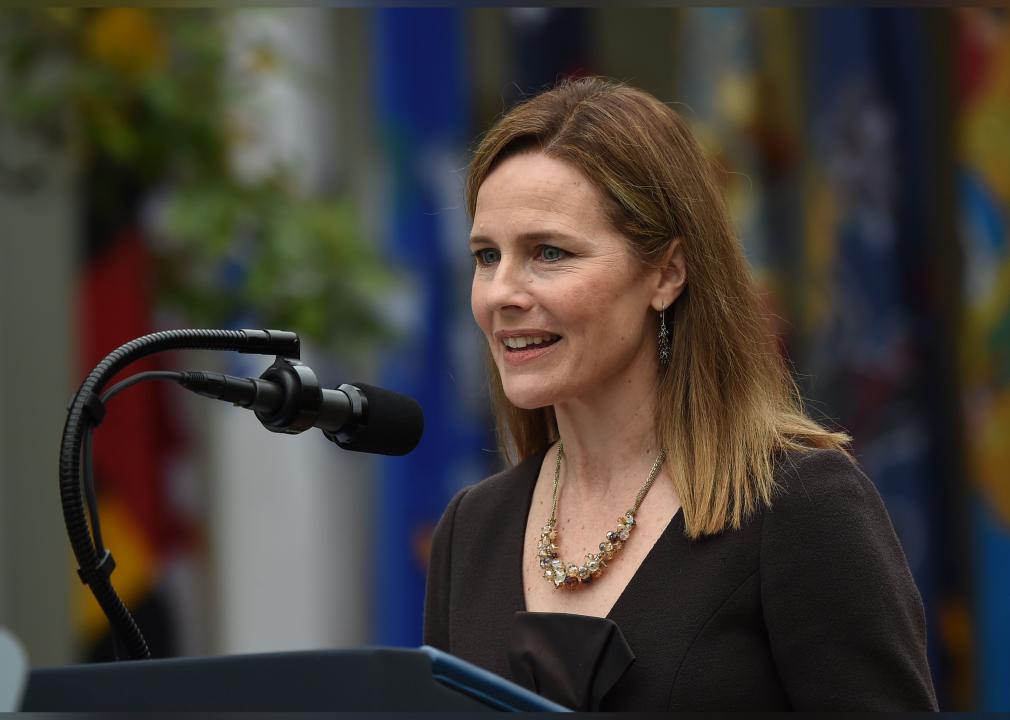Every Supreme Court justice of the past 50 years
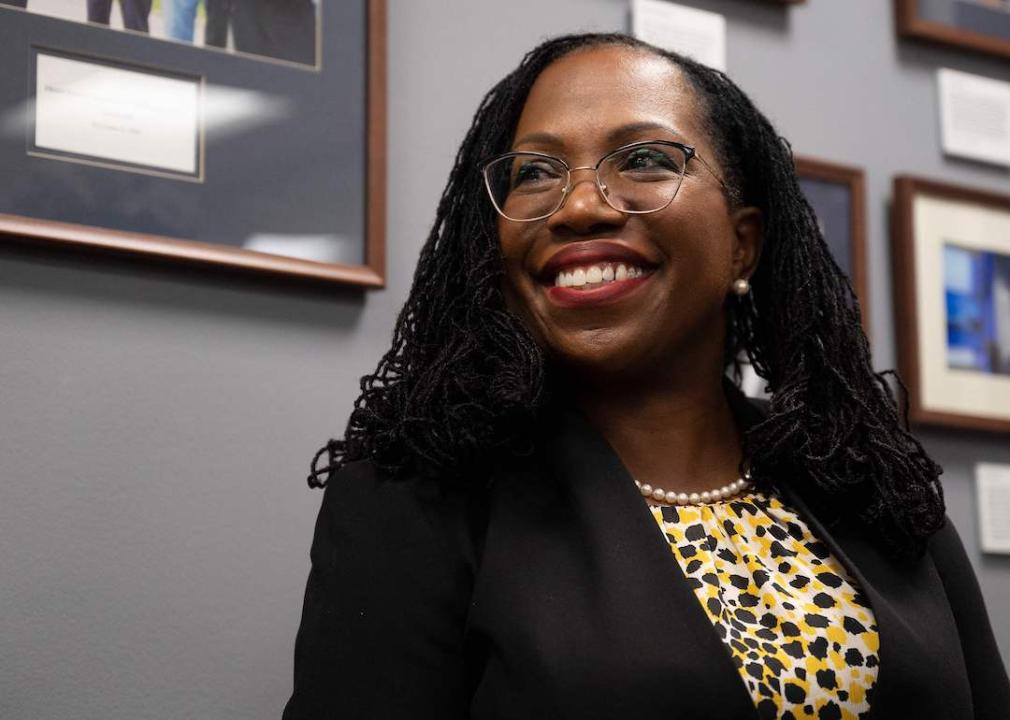
JIM WATSON // AFP via Getty Images
Every Supreme Court justice of the past 50 years
More than two-and-a-quarter centuries since the first assembly of the Supreme Court in 1790, neither of the other two branches of government bears as close a resemblance to its original form as the highest American court.
Even as its number of justices and gender and racial makeup evolved over generations, the Supreme Court’s core responsibility remains unchanged: Interpret the constitutionality of laws and serve as the final venue of appeal for corporations, governments, and even individual people.
Appointing a justice is one of a president’s most lasting and impactful decisions. In February 2022, President Joe Biden had his first opportunity to nominate a Supreme Court justice, a replacement for Justice Stephen Breyer, who is retiring at the end of the 2021-2022 term. Biden kept his 2020 campaign promise to nominate the first Black woman to potentially serve on the Supreme Court, selecting Judge Ketanji Brown Jackson. After a contentious confirmation hearing, Judge Jackson was confirmed on April 7, 2022.
The last half-century has been among the most consequential in the Supreme Court’s history, from civil rights and corporate law to religious freedom and gender equality. Here’s a look at every justice appointed and confirmed to serve on the Supreme Court over the last 50 years.
You may also like: Former jobs of every Supreme Court justice
![]()
Moshe Pridan // Wikimedia Commons
Earl Warren (1953–1969)
The son of a railroad mechanic, Los Angeles native Earl Warren rose to become one of the most consequential chief justices in the history of the Supreme Court. Warren was the driving force behind Brown v. Board of Education of Topeka, the landmark 1954 decision that banned racial segregation in public schools and paved the way for the modern Civil Rights movement. Serving from 1953–1969, Chief Justice Warren presided over one of the most tumultuous periods in American history. He previously served as district attorney and governor of California.
Mathew Brady or Levin Handy // Wikimedia Commons
John Marshall Harlan II (1955–1971)
Just as Chief Justice Earl Warren was a liberal icon, John Marshall Harlan II was a darling among conservatives. Worried about progressive overreach following the Brown v. Board decision the year before, Congress took the then-unprecedented step of subjecting Harlan to questions about his judicial philosophy during a Senate Judiciary Committee hearing prior to his confirmation, a process that is now standard practice. Harlan, who enforced Prohibition as an assistant U.S. attorney, wrote dissenting opinions on landmark cases that limited police powers—including the famous Miranda v. Arizona case that guaranteed the right to have an attorney present during questioning—while joining the majority in groundbreaking civil rights cases.
Robert S. Oakes // Wikimedia Commons
William J. Brennan (1956–1990)
Few Supreme Court justices served longer or exerted more influence than William J. Brennan, the son of Irish immigrants who rose to the rank of colonel during service in World War II. Elevated to the High Court by President Dwight D. Eisenhower as a recess appointment, he was confirmed despite several objections to his Catholic faith—and one lone no-vote by Sen. Joseph McCarthy. A skilled back-room collaborator who was known for his ability to persuade fellow justices, Brennan wrote more than 1,200 opinions during his tenure—including Baker v. Carr, which established the “one person, one vote” standard.
Supreme Court of the United States
Charles Evans Whittaker (1957–1962)
Justice Charles E. Whittaker’s rise to the Supreme Court was as unconventional as his tenure. A high school dropout, Whittaker leveraged both his talents and his political connections to rise first to a seat on a U.S. District Court, then to the U.S. Court of Appeals, and then finally to the United States Supreme Court. One of the shortest-serving justices—and one whose impact is among the least remembered— Whittaker retired after just five years due to what was likely a nervous breakdown. In a final act of integrity, Whittaker refused his federal pension in retirement, as his conscience forbid him from accepting government benefits while he was still able to work.
Robert S. Oakes // Wikimedia Commons
Potter Stewart (1958–1981)
Justice Potter Stewart’s position as a lonely centrist on a sharply divided court gave him enormous clout as a swing vote during his two-plus decades on the bench. A World War II veteran, Stewart used his legal skills to act as the defense in several summary court-martial trials. He served on the Sixth Circuit Court of Appeals before becoming President Eisenhower’s third recess appointment to the Supreme Court. He was instrumental in striking down the death penalty in 1972, but also in reinstating it four years later.
You may also like: Oldest cities in America
Pictorial Parade/Archive Photos // Getty Images
Arthur Goldberg (1962–1965)
Born into humble circumstances, Justice Arthur Goldberg was the son of Jewish immigrants, with lineage that traces to the Polish town that would later become the site of the Auschwitz concentration camp. A ferocious opponent of the death penalty, his three-year tenure was one of the shortest in the history of the High Court, but also among the most productive. Goldberg’s most critical opinion is the one that declared that the Ninth Amendment guarantees the right to privacy. In 1965, he accepted a request from President Lyndon B. Johnson to retire and take on the role of U.N. ambassador as the budding Vietnam War began to spiral out of control.
Library of Congress // Wikimedia Commons
Byron White (1962–1993)
Born in Colorado, Justice Byron White was a star athlete who left medical school to play professional football for the team that is now called the Pittsburgh Steelers. He later entered the law profession, clerked for the Supreme Court, worked in private practice, and later joined John F. Kennedy’s campaign for president before being nominated to replace Justice Whittaker. He wrote nearly 1,000 opinions over more than three decades of service, during which he became known for his intense and sometimes harsh questioning of attorneys. Although White upheld affirmative action and voted to desegregate schools, he became more conservative with age. He voted to reduce civil rights protections and upheld a ban on consensual gay sex.
Marion S. Trikosko // Wikimedia Commons
Abe Fortas (1965–1969)
Born in 1910 in Memphis, Justice Abe Fortas was the first member of his family to go to college—and at age 20, he earned the distinction of being the youngest law student at Yale University. He served in several high-level government posts and later worked in private practice defending victims of McCarthyism. Once appointed to the Supreme Court, he became an ally of Chief Justice Earl Warren, siding with the majority on major civil rights cases like the Voting Rights Act of 1965. When Warren resigned, President Johnson nominated Fortas for chief justice, but his bid was rejected due to Fortas’ long-standing friendship with the president.
Stock Montage // Getty Images
Thurgood Marshall (1967–1991)
In the entire history of the Supreme Court, few names ring louder than that of Justice Thurgood Marshall: a champion of civil rights who successfully argued 30 cases before the High Court before being appointed himself. A native of then-segregated Baltimore, Marshall would become the first black Supreme Court justice in American history. While he wielded incredible influence as a justice and authored many landmark opinions, he is probably most famous for his work as an attorney—when he successfully argued Brown v. Board of Education before the Supreme Court he would later join.
Library of Congress // Wikimedia Commons
Warren E. Burger (1969–1986)
Born into humble circumstances in Minnesota in 1907, Chief Justice Warren Burger’s talents earned him an early place among the political power brokers of the state’s Republican party. President Richard Nixon appointed Burger to replace Earl Warren in hopes that Burger’s law-and-order reputation would provide a conservative counterweight to what Nixon saw as the liberal excesses of the 1960s. Although the lifelong Republican’s conservative bona fides did shine through in several opinions, he joined liberal majorities on several key decisions—particularly the one that enforced school busing as a remedy to segregation.
You may also like: U.S. cities with the dirtiest air
Robert S. Oakes // Wikimedia Commons
Harry Blackmun (1970–1994)
Like Justice Burger, Justice Harry Blackmun was born in Minnesota during the first years of the 20th century; the two were friends and Blackmun attended Harvard on Burger’s advice. His passion for medicine drove him to serve as counsel for the Mayo Clinic—a time he later looked back on fondly—before asserting himself as a reliably conservative voice on the U.S. Court of Appeals. After his appointment by Richard Nixon to the Supreme Court, Blackmun drifted to the left and grew apart from the chief justice. Motivated by his time at the Mayo Clinic, Blackmun led the controversial Roe v. Wade decision, which protected legal abortion.
Library of Congress // Wikimedia Commons
Lewis F. Powell Jr. (1972–1987)
Born in Virginia in 1907, Justice Lewis F. Powell Jr. stood out in law school and rose quickly upon graduation, making partner in a prestigious law firm after just three years. Active in both politics and the American Bar Association, he was unanimously voted as president of that organization, which he dramatically reformed during his tenure. When Powell was appointed to the Supreme Court, he served his term as a moderate and a pragmatist, which earned him the respect and admiration of many fellow justices. He was the deciding vote on several high-profile cases.
Wikimedia Commons
John Paul Stevens (1975–2010)
Although he was a child of the Depression, Justice John Paul Stevens was born into one of Chicago’s wealthiest families. A decorated World War II codebreaker, Stevens went on to a law career that included a clerkship for Supreme Court Justice Wiley Rutledge and a stint on the U.S. Court of Appeals. Although he was appointed by Republican President Richard Nixon, Stevens became the bedrock of the court’s liberal wing. He spearheaded decisions in cases like Sony v. Universal City Studios, which allowed people to use VCRs without violating copyright laws, and worked to strengthen and uphold the Americans With Disabilities Act. When he retired at 90, he was the third-longest-serving justice in the court’s history.
Wally McNamee/CORBIS/Corbis via Getty Images
Sandra Day O’Connor (1981–2006)
Texas native Sandra Day O’Connor will always be remembered as the first woman to serve as a justice on the Supreme Court. The true legacy of the former Arizona state senator and state Superior Court judge, however, lies in her opinions. Nominated by President Ronald Reagan and approved unanimously by the Senate, O’Connor led the majority on a decision that required female-only nursing schools to admit men and also served as the swing vote on a case that upheld Roe v. Wade.
Robert S. Oakes // Wikimedia Commons
William Rehnquist (1986–2005)
Chief Justice John Marshall was a hero to Chief Justice William Rehnquist, and the two men are now remembered as among the most successful chief justices in history. Born in 1924 in Wisconsin, Rehnquist served in World War II then embarked on an academic career that was so impressive he was hired as a Supreme Court justice’s clerk at a young age. During that time, he wrote a controversial memo to the justice urging him to reject Brown v. Board of Education and uphold Plessy v. Ferguson, whose “separate but equal” doctrine enshrined legalized segregation. After serving as deputy attorney ceneral under President Nixon, he was nominated for the Supreme Court—and his civil rights memo came back to haunt him during Senate confirmations hearings. Rehnquist prevailed, however, and was later elevated by President Reagan to the position of chief justice, where his even temperament and consensus-building skills enshrined his success and legacy.
You may also like: Iconic buildings that were demolished
United States Mission Geneva // Wikimedia Commons
Antonin Scalia (1986–2016)
The sudden death in 2016 of New Jersey native Justice Antonin Scalia was a crushing blow to the legions of conservatives who viewed him as a hero. Highly regarded both as a law student and a professor, Scalia was appointed by President Ronald Reagan to serve on the U.S. Court of Appeals, where he cemented his masterful legal writing skills, as well as his reputation for wit and strict adherence to conservative, originalist doctrine. During his 30 years on the bench, Scalia wrote more concurring opinions than any justice in history and more dissenting opinions than all but two. Controversial, aggressive, and unconventional, Scalia will be remembered as one of history’s most consequential and colorful justices.
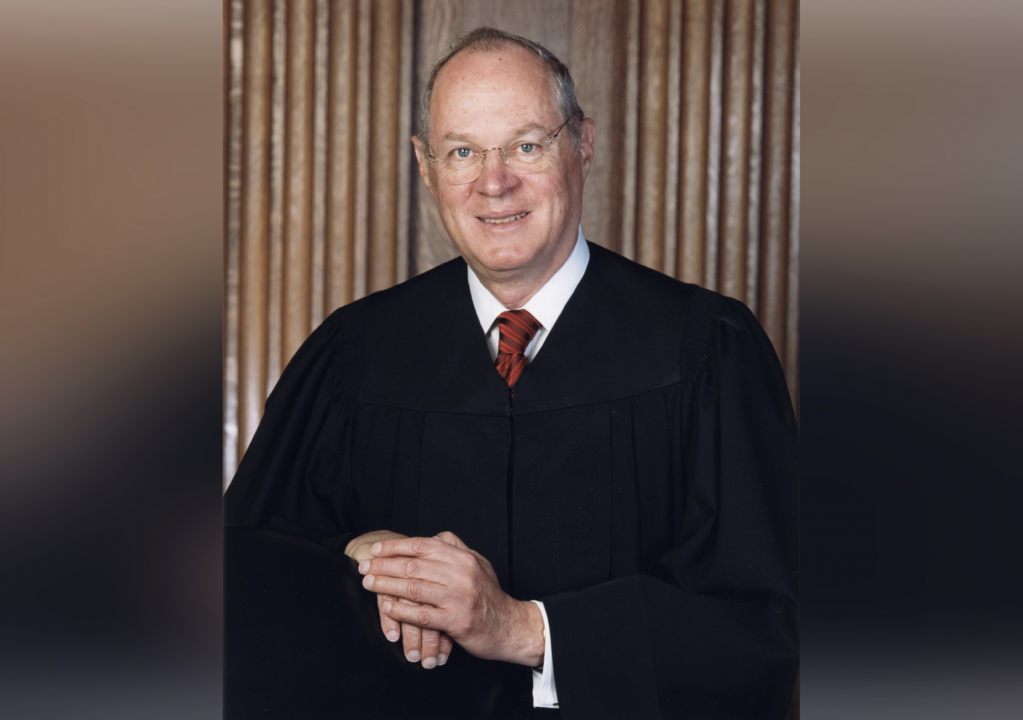
Collection of the Supreme Court of the United States // Wikimedia Commons
Anthony Kennedy (1988–2018)
California native Justice Anthony Kennedy was born into a prominent political and legal household, where visits from giants like Earl Warren were not uncommon. After working in private practice, Kennedy, who retired in 2018, worked as a lobbyist, a position he used to help then-Governor Ronald Reagan pass a spending bill. At 38, he became the youngest appellate judge in America and rose to the Supreme Court after the failed nomination of Robert Bork. A powerful voice of individual liberty, Kennedy was known as a swing vote for high-profile cases like Obergefell v. Hodges, which enshrined marriage equality in 2015.
Matthew Hutchins of the Harvard Law Record // Wikimedia Commons
David Souter (1990–2009)
Many seemingly conservative justices were appointed by Republican presidents only to evolve into left-leaning jurists—but few more dramatically than Massachusetts-born Justice David Souter. After a stellar academic career, he moved from private practice to become a deputy state attorney general before moving to the United States Court of Appeals. He would serve there for just three months before President George H.W. Bush nominated him for the Supreme Court. A strong supporter of the separation of church and state, Souter’s philosophical legacy is that laws should change with societal realities—a stark contrast to the philosophy of originalists like Justice Scalia.
Mark Wilson // Getty Images
Clarence Thomas (1991–Present)
Just 43 years old and backed by less than a year of judicial experience when he was nominated for the High Court, Justice Clarence Thomas endured one of the harshest nomination hearings in history due to allegations of sexual harassment from former colleague Anita Hill. The Georgia native remains only the second African-American appointed to the Supreme Court, breaking several racial barriers during his academic career. Although he was one of the first students to benefit from Yale University’s then-new open-admission policy, which for the first time opened the school to non-white students, Thomas is known to despise affirmative action. He has proven to be a reliably conservative voice, but mostly in writing: Thomas is known for remaining silent during arguments.
Nikki Kahn/The Washington Post via Getty Images
Ruth Bader Ginsburg (1993–2020)
Born in Brooklyn in 1933, Justice Ruth Bader Ginsburg solidified the liberal wing of the Supreme Court when her nomination was confirmed in 1993. Prior to her nomination, Ginsburg was a powerful advocate for women’s rights through her work with the American Civil Liberties Union, and she continued to press for gender equality from the bench. Instead of forcing change through the courts, her skillfully written opinions forced the legislature to rewrite the rules on policies like gender-based pay discrimination and gender equality in the military. In the last two decades before her death, she was diagnosed with colon cancer, lung cancer, and pancreatic cancer, but rarely missed a day of oral arguments even when hospitalized.
You may also like: States that have accepted the most refugees in the past decade
U.S. National Archives
Stephen Breyer (1994–2022)
San Francisco native Stephen Breyer served on the Supreme Court nearly a quarter-century after his nomination and confirmation, far longer than the average justice’s 16-year run. Hired just one year out of law school as a clerk for Justice Arthur Goldberg, Breyer served as Special Counsel for the Senate Judiciary Committee and was a Watergate prosecutor. The hallmark of the Clinton appointee’s tenure was pragmatism, acting as a moderate voice with deference to decisions made by the Legislature. He announced his retirement in January 2022 that he would retire after the 2021-2022 term.
Steve Petteway // Wikimedia Commons
John Roberts (2005–Present)
President George W. Bush originally appointed Chief Justice John Roberts to replace Justice Sandra Day O’Connor, but when Chief Justice William Rehnquist retired, he withdrew that nomination so he could appoint Roberts—who had earlier been appointed by President Bush to sit on the U.S. Court of Appeals—to head the High Court. The youngest chief justice in a century, Roberts authored several opinions that adhered to conservative ideals on issues of race in academic institutions and the military. However, he has fallen out of favor with many conservatives in recent years after supporting decisions that bolstered the Affordable Care Act and legalized gay marriage.
JoshEllie1234 // Wikimedia Commons
Samuel Alito (2006–Present)
New Jersey-born Justice Samuel Alito is a reliably conservative justice whose appointment cemented the legacy of President George W. Bush. A graduate of Princeton and Yale, Alito was appointed to the U.S. Court of Appeals by Bush’s father, President George H.W. Bush. Unlike many of his colleagues, who are often guided by an overarching judicial philosophy, Alito is known for making decisions on a case-by-case basis—although he has displayed libertarian leanings. He wrote the majority opinion in the Burwell v. Hobby Lobby decision that exempts employers from certain laws based on the religious convictions of the owners.
Stacey Ilyse // Wikimedia Commons
Sonia Sotomayor (2009–Present)
The first Latino woman—and the third woman of any ethnicity to be appointed to the Supreme Court—Justice Sonia Sotomayor was raised in public housing projects in the Bronx. Sotomayor’s early academic brilliance earned her several scholarships, and she was hired to work for the iconic Manhattan District Attorney Robert Morgenthau when she was just 25 years old. She was appointed to the U.S. District Court by Republican President George H.W. Bush before being nominated to the Supreme Court by Democratic President Barack Obama. She quickly established herself as a feisty, inquisitive jurist and a reliable voice for gay rights, affirmative action, the Affordable Care Act, and other liberal banners.
TIM SLOAN/AFP via Getty Images
Elena Kagan (2010–Present)
New York City native Justice Elena Kagan completed a stellar academic career before clerking first for a U.S. Appeals Court judge and then later for Supreme Court Justice Thurgood Marshall. After moving between careers in law, academia, and briefly, politics, she was confirmed for the Supreme Court after being nominated by President Barack Obama. The youngest justice on the court, as well as the only one with no judicial experience, Kagan’s arrival signaled the first time in history that the Supreme Court would include three sitting female justices at the same time. She is known as the justice who is most in tune with pop culture and technology.
You may also like: 50 ways the news industry has changed in the last 50 years
Office of Senator Luther Strange // Wikimedia Commons
Neil Gorsuch (2017–Present)
At Harvard, future Justice Neil Gorsuch was classmates with future President Barack Obama. Ironically, Obama should have named the successor to Antonin Scalia’s seat, but tactics by the Republican-controlled Senate stymied that effort—which led to the elevation of Justice Gorsuch by President Trump. Gorsuch clerked for two Supreme Court justices, Kennedy and White, before taking his own place on the court in 2017.
SAUL LOEB/AFP via Getty Images
Brett Kavanaugh (2018–Present)
Like Judge Clarence Thomas, Justice Brett Kavanaugh went through a contentious confirmation hearing when psychology professor Dr. Christine Blasey Ford came forth with allegations that he sexually assaulted her when they were younger. Kavanaugh was later confirmed in October 2018 to give the high court a conservative majority for the first time in decades. In the past, he has clerked for former Justice Anthony Kennedy, helped write the Starr Report that detailed the grounds for President Bill Clinton’s impeachment, and served in the U.S. Court of Appeals on the DC Circuit despite many senators considering him too partisan.
OLIVIER DOULIERY/AFP via Getty Images
Amy Coney Barrett (2020–Present)
The nomination and subsequent confirmation process of Justice Amy Coney Barrett was highly controversial, mainly due to the timing of it. Following Justice Ruth Bader Ginsburg’s death in September 2020, President Donald Trump moved quickly to nominate her replacement. He was met with opposition from senate Democrats because of how close the 2020 presidential election was—and how the Senate Republicans did not allow Obama’s Supreme Court justice pick to get confirmed when a similar situation happened four years prior.
Barrett was 48 years old when she was confirmed, making her one of the youngest Supreme Court justices in history. The justice, who clerked for former Justice Antonin Scalia, is also one of the most conservative voices in the high court—particularly on the topics of abortion and LGBTQ+ rights.
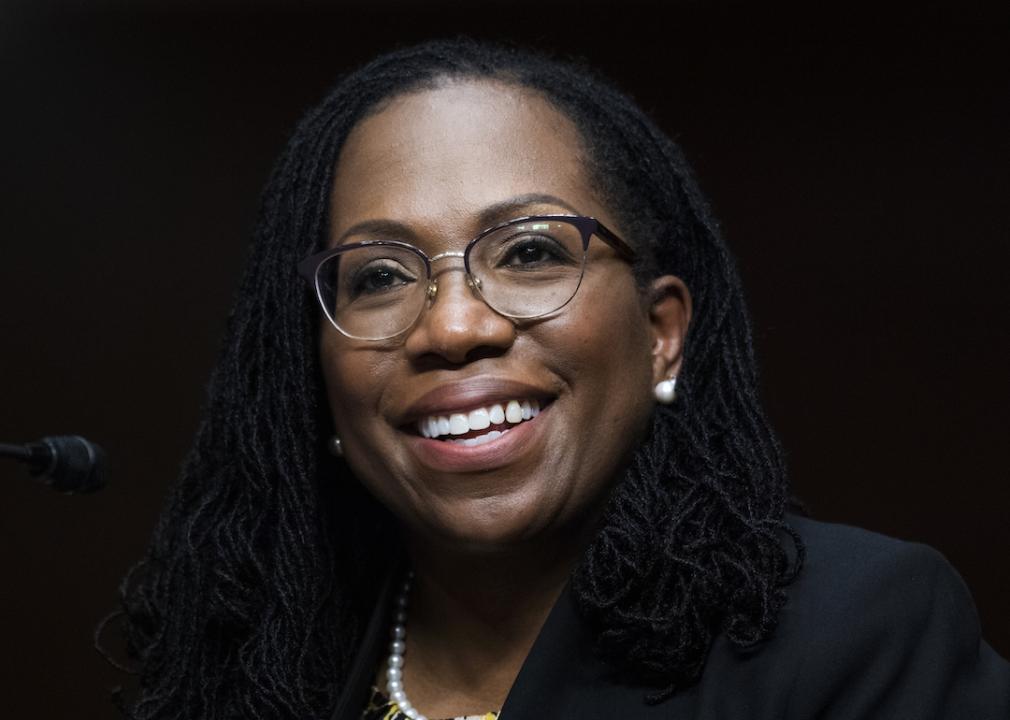
Tom Williams-Pool // Getty Images
Ketanji Brown Jackson (2022–Present)
Like the divisive confirmation process of the three justices before her, Judge Ketanji Brown Jackson faced combative questioning in the hearings prior to being confirmed as a Supreme Court justice on April 7, 2022. Not only did she make history as the first Black woman to join the highest court in the land, but she’s also the first former federal public defender to serve on the Supreme Court.
The D.C.-born, Miami-raised judge graduated from Harvard Law School before clerking for Justice Stephen Breyer, whose seat she took on the Supreme Court when he retired 22 years later. Throughout her career, Jackson worked as an attorney in private practice, a federal public defender, vice chair of the U.S. Sentencing Commission, a federal appellate judge, and a federal district court judge for D.C.—where she made several rulings against the Trump administration. While on the Sentencing Commission, she reduced sentences for some drug-related offenses and has a record of backing workers’ rights.
You may also like: Famous declassified government secrets
